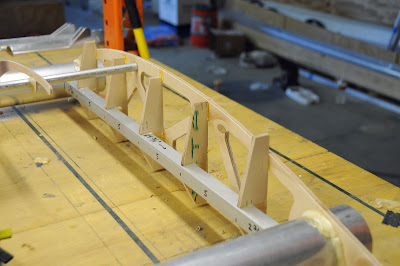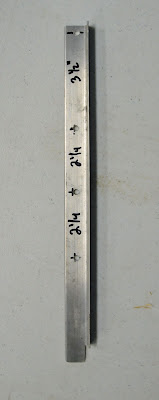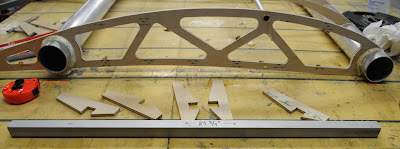Please note: James' blog has moved to a Wordpress site. To access it, please visit
http://jameswiebe.wordpress.com/. All posts have been transferred to the new site, and all new posts will only be accessible via Wordpress. Thank you for your interest!
Just some quick, simple thoughts on what happened today at the EAA:
In case you haven't heard, Rod Hightower abruptly left the EAA earlier today. Citing reasons related to his family, he has chosen not to relocate to Oshkosh (this, after two years on the job).
Smelling a stinking, dead rat, I did a slight amount of sleuthing around the web. Wasn't hard to find the signs of discontent over the brief tenure of Hightower --
* Anger of the
loss of around 30 EAA employees in January of this year, for non-economic reasons
* Unhappiness with
J. Mac McClellan (note picture with him and his Baron)
* Changes in AirVenture, the EAA premier fly-in. (Read an interesting list of pros & cons of Airventure
here.)
Hey, I was at that AirVenture, but like all of my recent appearances there, I was consumed with showing and selling Belite aircraft and instrumentation, and didn't pay attention to any changes or any 'rumble' in the ground. I claim my ignorance pass on fundamental business grounds. So I have to rely on other sources.
Quoting
Robert Goyer from Flying Magazine:
"Despite overall good weather, attendance at this year’s EAA AirVenture fly-in was down from last year, with EAA reporting a drop of approximately 40,000 tickets from the 2011 show, the steep decline due no doubt in part to the continuing economic downturn."
This is a pretty good example of facts, mixed with speculation, and presented only as facts leading to a certain conclusion. Get that? The drop in attendance had something to do with an economic downturn, but the wording suggests it is the major part or the only part. If that's true, I would have expected the dropoff in attendance to have been more severe in 2008, 09, or 2010, when the Recession was the "Great Recession".
It's very interesting, heck, it's fascinating to look at the comments embedded in this linked article from the EAA website.
I'll make it easy, and extract Joe Coraggio's comments from the bottom of that article:
As one of the attendees of this meeting, it is not surprising to note that none of the comments or concerns of the members that spoke during this meeting are published here. A membership organization of this size is bound to have differences of opinions between those who run the organization and its members. However, the dissension seems to be growing. I think EAA members need to become a bit more active in the administration and oversight of our membership organization. To that end, a few of the items that people commented on are as follows. 1) The board members select the president of EAA. The president of EAA, through how the bylaws and election process is set up, chooses the board of directors. It is an incestuous relationship that does not have any accountability to the membership. There was a proxy drive organized by memb
ers whose goal is to have a membership direct electronic election of the board of directors. This way we would have some accountability of the board and executive management. (As an example the current system gave the president of EAA 27,000+ votes. There were less than 100 people in attendance voting, and four hundred sixty some proxies collected by a member in the two weeks prior to the convention.)
2) Offensive treatment of volunteers. There was a lot of items cited to show this, however some of the larger ones are tracking numbers on volunteer credentials and the requirement of all the volunteer chairmen to file performance reviews on their volunteers. Now what purpose could a performance review on volunteers serve? It is my personal opinion that no matter how big or small a contribution, if someone wants to donate their time to help better our organization or our convention all I can say is thank you!
3) Again with offensive treatment of volunteers, one of the Airventure Cup volunteers pointed out that he was personally offended when EAA publicly stated that due to liability concerns they would no longer be associated with air racing, and cancelled the Airventure Cup race. (Which did eventually take place as a SARL event.) They even denied ever being associated with the event. Then 2 weeks later, the EAA president was on television and internet news with an AT-6 at the Reno Air Races Pylon Racing School with EAA logos on the tail of the airplane, and EAA logos prominently displayed in related photo and video media.
4) Chalets. Those Chalets took up at least 30 or maybe more prime parking spaces for airplanes. They were exclusive, and something out of reach of most EAA members. One member stood up and said that for the past 35 years he has brought the same homebuilt, that he built to Oshkosh, and is seriously considering not returning due to those chalets. His sentiment was "Nothing says your not welcome like a white picket fence." Another EAA member stated that he has stopped taking his homebuilt to a show near his home base due to similar chalets.
There were about 5 or 10 other people that spoke either to different points or these same ones, but those were the ones that most resonated with me. I feel that EAA members need to spend a bit of time understanding what is going on in their organization and how its executive and board members are held accountable. If you have questions about how the elections of the board of directors works, or how to get in contact with them, email Feedback@eaa.org or rhightower@eaa.org.
My concluding remarks:
Well, for me it's easy. It never was Hightower, It's not the 'EAA', it's an Experimental Aircraft Association. You are welcome to use the initials, but please remember what they stand for.
The EAA exists to allow all facets of experimental aviation to be fostered and flourish. Other organizations, such as the AOPA, are in existence for the purpose of promoting and serving general aviation. I've been there, and done that, and for the time being, left it behind.
From my point of view, with the economy down, EAA needs to focus on grass roots, low cost, user fulfilled aviation.
(c) 2012 James Wiebe





































